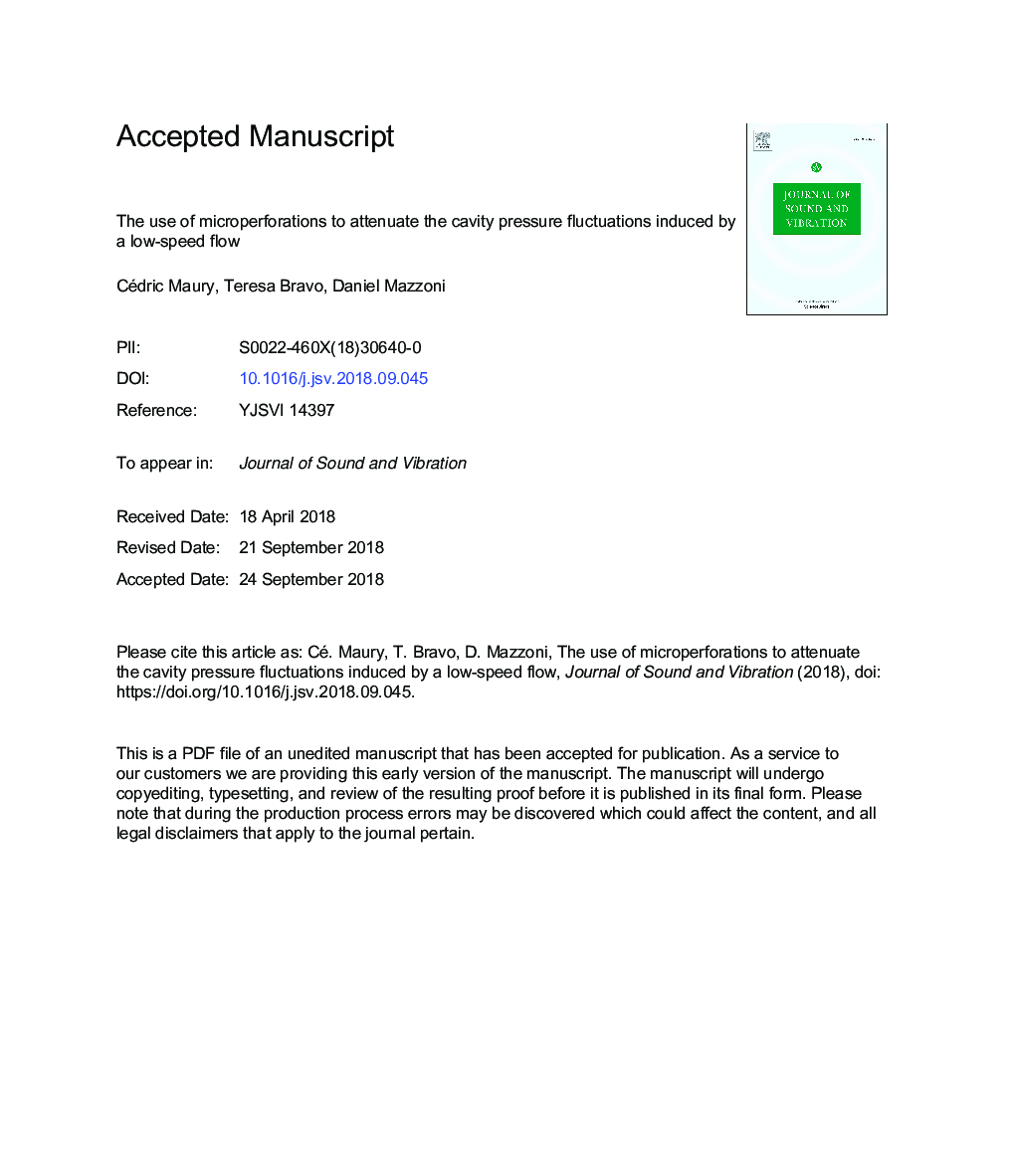| Article ID | Journal | Published Year | Pages | File Type |
|---|---|---|---|---|
| 11012579 | Journal of Sound and Vibration | 2019 | 68 Pages |
Abstract
The paper describes experimental and numerical studies on the use of micro-perforated panels to reduce the flow cavity pressure fluctuations under a low-speed turbulent boundary layer. This passive strategy has been hardly studied in shallow cavities with length-to-depth ratios of the order of 10, for which flow reattachment might occur at the cavity floor. This implies the formation of a localized recirculation bubble upstream in the cavity, which is referred to as a closed cavity flow regime. An open flow regime takes place when the cavity is separated from the main flow by a shear layer over the full length. For a transitional case with a length-to-depth ratio of 10.6, micro-perforating the cavity floor reduces by up to 8â¯dB the dominant spectral peaks related to the bottom wall-pressure fluctuations in the first half of the cavity. For the closed regime with a length-to-depth ratio of 17.6, up to 6â¯dB reduction is found. The broadband fluctuations that are dominating in the downstream part of the cavity are not affected by the presence of the micro-perforations. Reduction of the peak pressure levels by the apertures is confirmed by two-dimensional Lattice Boltzmann simulations. Maximum dissipation occurs when outflow conditions are established within and at the inlet-outlet of the orifices. The impedance of the micro-perforated floor has been optimised and its effect on the bottom wall-pressures has been assessed.
Related Topics
Physical Sciences and Engineering
Engineering
Civil and Structural Engineering
Authors
Cédric Maury, Teresa Bravo, Daniel Mazzoni,
